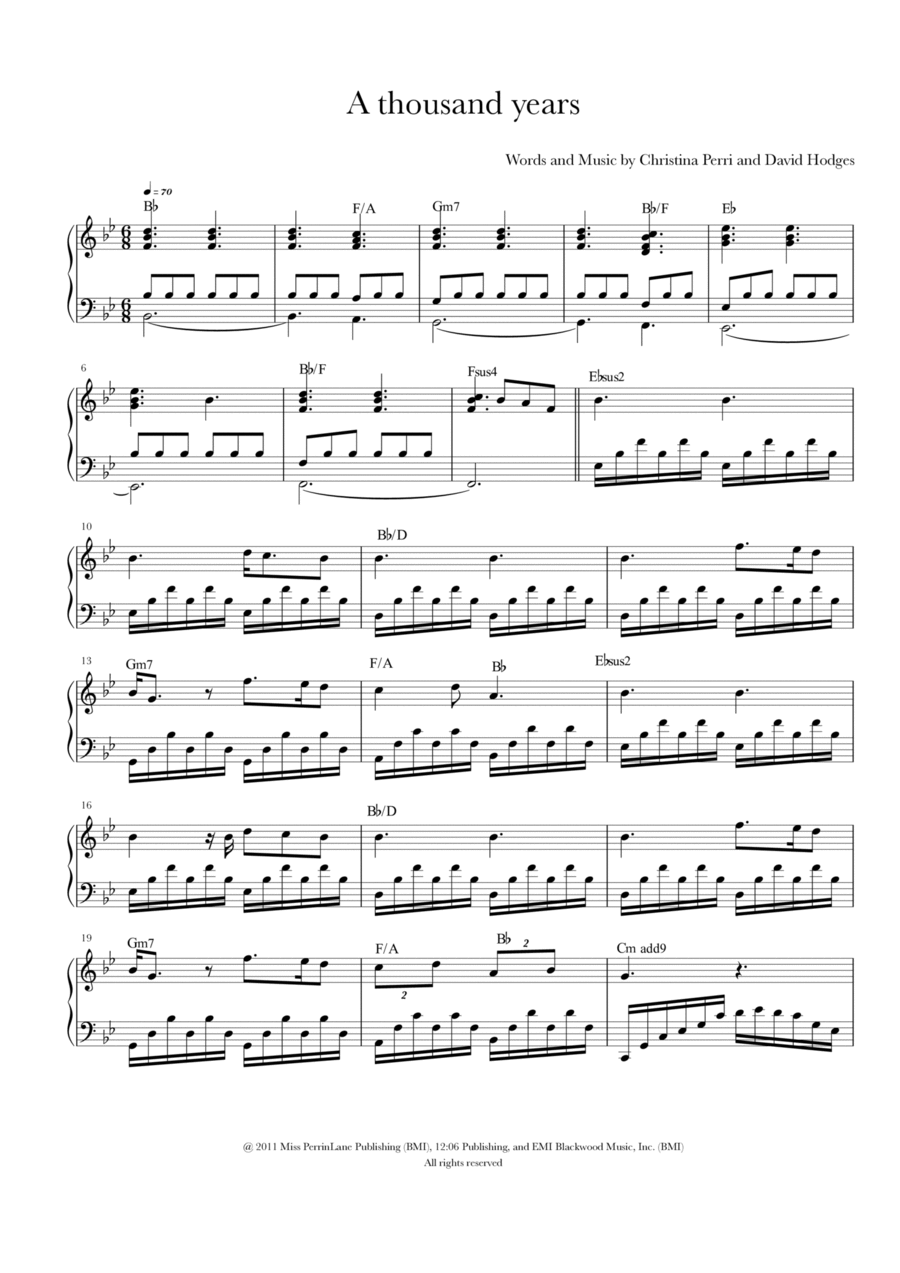Piano Solo - Level 2 - Digital Download SKU: A0.1262579 By Christina Perri. By Christina Perri and David Hodges. Arranged by Mav Duo. Film/TV,Pop. Score. 5 pages. Musicial #855592. Published by Musicial (A0.1262579). Unleash the Emotion: A Captivating Solo Piano Arrangement of A Thousand Years by Christina PerriAre you yearning for a soul-stirring musical experience that will transport you through time and touch the deepest recesses of your heart? Look no further, for we have a breathtaking solo piano arrangement of A Thousand Years by Christina Perri that will leave you utterly captivated.Immerse yourself in the timeless beauty of this beloved ballad as the piano keys whisper delicate melodies and evoke a cascade of emotions within you. Every note, every chord, is meticulously crafted to recreate the tender magic of A Thousand Years in a stunning instrumental rendition. Prepare to be swept away by the power and elegance of the piano as it weaves its own enchanting tale.Crafted by a skilled musician and arranged with utmost precision, this solo piano rendition of A Thousand Years captures the essence of the original song, elevating it to new heights of musical brilliance. The pure simplicity of the piano, with its ability to convey profound emotions, allows the heartrending beauty of the melody to take center stage, shining through with an unparalleled clarity.Whether you're a piano virtuoso seeking a challenging masterpiece to showcase your skills, an intermediate player yearning for a captivating piece to inspire your practice sessions, or a passionate music lover desiring a mesmerizing addition to your collection, this solo piano arrangement is an absolute must-have. It offers an opportunity to embrace the raw emotion of A Thousand Years and express your own interpretation through the power of your fingertips.As you navigate the gentle rise and fall of the melody, you'll feel an undeniable connection to the lyrics and the heartfelt emotions they encapsulate. Each delicate stroke of the piano keys reveals the bittersweet longing, the eternal love, and the unyielding hope found within this modern-day classic. Let the music guide you on an introspective journey, conjuring memories and dreams as it resonates deep within your soul.This exquisite solo piano arrangement of A Thousand Years is not just a musical composition; it is a conduit for emotions, a vessel that carries you to a world of tenderness and vulnerability. With each passing measure, you'll find yourself enveloped in a tapestry of longing, passion, and the eternal promise of love.Don't miss the chance to own a piece of musical brilliance. Order your solo piano arrangement of A Thousand Years today and immerse yourself in the unparalleled beauty and emotional resonance of this unforgettable composition. Let the piano keys become an extension of your heart, allowing you to relive and rediscover the timeless magic of Christina Perri's masterpiece.Keywords: solo piano arrangement, A Thousand Years, Christina Perri, soul-stirring, musical experience, touch the heart, timeless beauty, captivating rendition, tender magic, instrumental brilliance, piano virtuoso, inspiring practice sessions, mesmerizing addition, raw emotion, bittersweet longing, eternal love, unyielding hope, modern-day classic, introspective journey, vessel of emotions, musical brilliance, emotional resonance.
